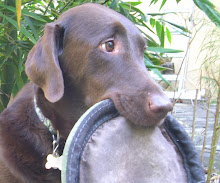 Now is a good time to discuss the wild coffee plants, Psychotria nervosa, that we have in our front yard. As the Latin name suggests, there is a lot to discuss here.
Now is a good time to discuss the wild coffee plants, Psychotria nervosa, that we have in our front yard. As the Latin name suggests, there is a lot to discuss here.The wild coffee and the coffee that we drink (coffee arabica, etc.) are related, both members of the Rubiaceae family. According to legend, coffee was discovered by goat herders who noticed that their goats got frisky after snacking on the bushes. But were those goats munching on psychotria nervosa bushes or some other member of the coffee family? And does the wild coffee plant have any unusual properties at all?
I've read that the word nervosa, in this context, refers to the prominent veins of the plant's leaves, but I am suspicious. Some plants are identified in this way for other reasons (the Hawaiian baby woodrose, Argyreia nervosa, for example, has psychoactive seeds). And what about the word psychotria? Apparently another species of wild coffee, psychotria viridis, is used in combination with a vine in South America to create a psychoactive drink called Ayahuasca, which has been used in religious ceremonies for centuries.
From most accounts on the web the wild coffee in our yard is just a benign bush with no unusual properties, though you can find contrary opinions. I could settle the issue by doing some testing of my own, but I'm just not that interested in spending the day in a South American jungle conversing with some excitable lizard/jaguar/god.
Cheryl and I have always lived quiet lives. We once had a glass of whiskey in Scotland (more like a fourth of a glass) and we have an occasional beer or glass of wine. She, especially, is a naturally silly person, so we have no interest in drugs, recreational or otherwise.
Coffee is another matter. We drink too much coffee. Maybe this is why I have a fondness for our wild coffee plants, and I'm content to allow them some mystery. Some things are better left alone.





























 After our unfortunate argument yesterday, Willow is refusing to help with the project. Instead she sits on the couch and pretends I am not working to fix the window trim pieces that she screwed up yesterday. In all fairness, it's possible that she was not responsible, and I even offered this as a token of compromise on my part, but apparently we still have some issues to work through.
After our unfortunate argument yesterday, Willow is refusing to help with the project. Instead she sits on the couch and pretends I am not working to fix the window trim pieces that she screwed up yesterday. In all fairness, it's possible that she was not responsible, and I even offered this as a token of compromise on my part, but apparently we still have some issues to work through.





 remaining task: put down the quarter round, a narrow piece of wood with a rounded side that ties the baseboard and floor together with just a bit of detail. You might say that quarter round is the plain and lesser cousin of crown molding. Most of the quarter round is missing from our house, and we are not quite sure why, but it has especially annoyed Cheryl from the start.
remaining task: put down the quarter round, a narrow piece of wood with a rounded side that ties the baseboard and floor together with just a bit of detail. You might say that quarter round is the plain and lesser cousin of crown molding. Most of the quarter round is missing from our house, and we are not quite sure why, but it has especially annoyed Cheryl from the start. 






 The varnish is down. I used an oil-based finish to give some amber color to the wood. It takes a few days to dry completely so we are walking around in socks and speaking in whispers. We scold Willow whenever she starts her spinning and jumping and Snoopy dancing, which is more often that I ever noticed before.
The varnish is down. I used an oil-based finish to give some amber color to the wood. It takes a few days to dry completely so we are walking around in socks and speaking in whispers. We scold Willow whenever she starts her spinning and jumping and Snoopy dancing, which is more often that I ever noticed before.
 I must admit, I like to take sandpaper to wood. I like to see the grain reveal itself as the finer sand paper is applied. Sanding is an art form that can never be mastered, and it is a task that can never be finished.
I must admit, I like to take sandpaper to wood. I like to see the grain reveal itself as the finer sand paper is applied. Sanding is an art form that can never be mastered, and it is a task that can never be finished.






